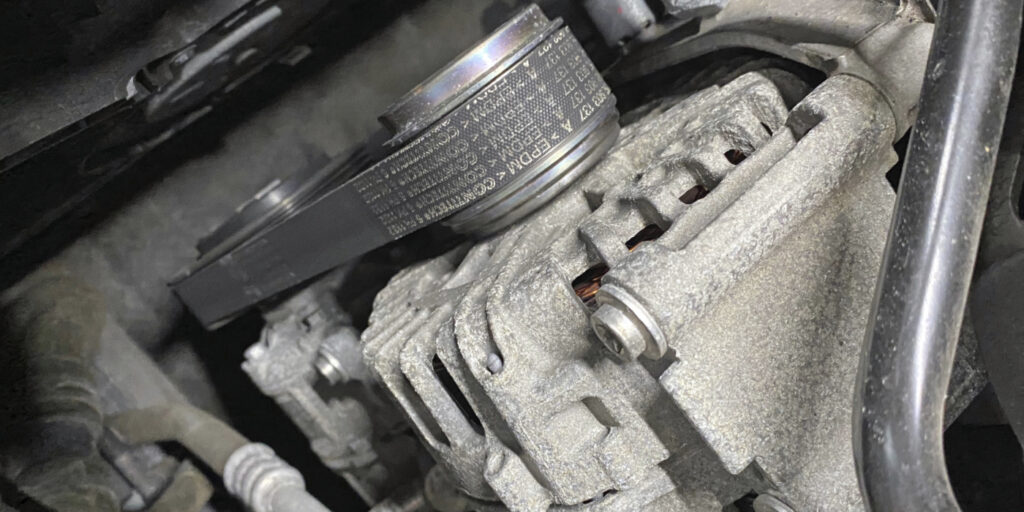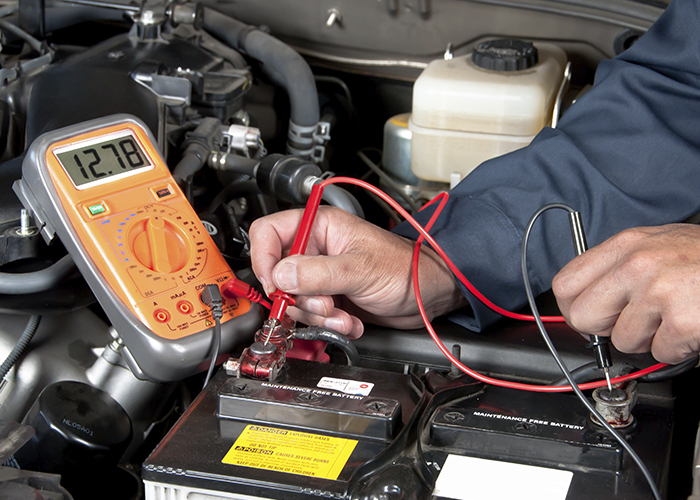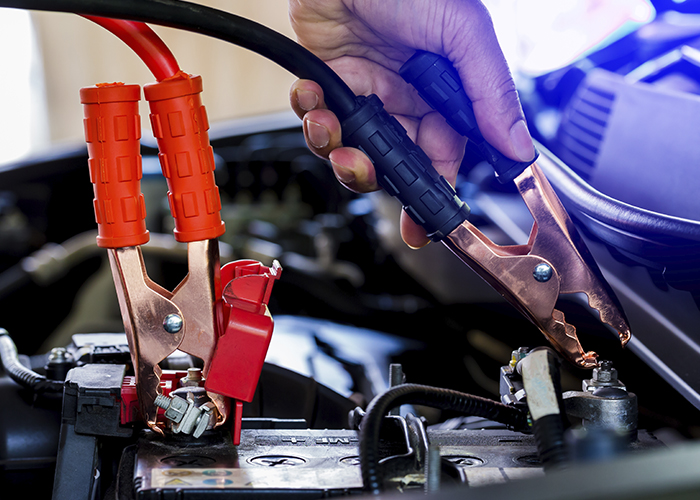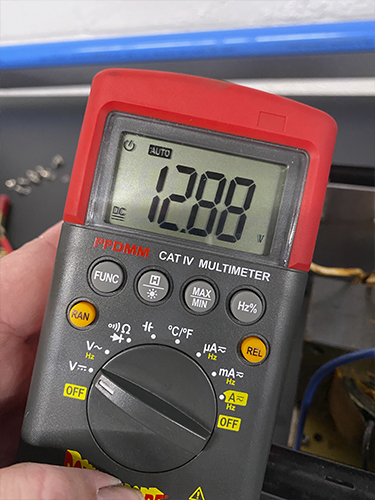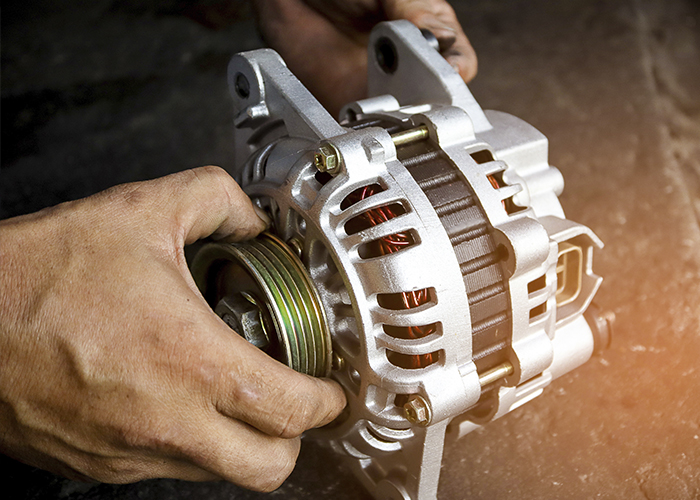As the saying goes, “Old habits die hard.” Among the old habits that have died hard in the repair profession is the way we test alternators. In the past, the job of the alternator or generator was simply to recharge the battery after startup and carry minor accessory loads such as ignition, lighting, radio, heating or air conditioning to the clutch and blower motor. At 14 charging volts, the total current draw for these accessories and the battery recharge was usually about 40 amperes, or 560 watts of current.
But, let’s fast-forward to 2006 when the charging capacity of most alternators may have exceeded 100 amperes or 1,400 watts. Wattage simply equals voltage multiplied by amperage. If the maximum output of an alternator equals 100 amperes of current at 12.0 volts across the battery terminals, its capacity would equal 1,200 watts of electricity. Wattage represents a more accurate number because the actual charging voltage of an alternator will vary according to temperature and load.
Because a modern car’s potential total accessory load can be as much as 1,145 watts, only 255 watts remain for recharging the battery. While the above numbers might represent an extreme, they do illustrate the difficulty that the modern alternator may have in keeping a vehicle’s battery fully charged.
Electrical demand varies according to vehicle application and use, so engineers built an alternator that will meet the average accessory demand of any vehicle and still have enough reserve capacity to keep the battery charged. If electrical demand is increased by added accessories, such as high-amperage sound systems or trailer lights and brakes, then the potential ability of the alternator to recharge the vehicle’s battery is practically reduced to zero. Also, if the vehicle is driven on short trips under high accessory loads, the duration of the charging cycle simply won’t be long enough to fully recharge the battery.
ALTERNATOR SPEEDS
An alternator is designed to turn at approximately two to three times crankshaft speed. Total alternator output is generally rated at 6,000 alternator rpm. Consequently, a 2:1 alternator drive ratio can usually be found on high-performance engines or constant-speed, over-the-road truck engines where the average engine speed is about 3,000 rpm. For most passenger cars, a 3:1 ratio between alternator and crankshaft speed translates into maximum alternator output of 2,000 engine rpm, which is the engine speed at which most alternators are tested.
Because automatic overdrive transmissions drastically reduce engine speeds, many modern engines operate well under 2,000 rpm until they reach highway speeds of about 60 to 70 mph. Consequently, if the alternator doesn’t maintain rated charging voltage at lower engine speeds, the battery will discharge under heavy accessory loads. In most cases of undercharging, the alternator may have an incorrect diameter pulley installed, the drive belt may be slipping or the alternator itself might be under capacity for the vehicle application.
BATTERY VOLTAGES
Because a battery becomes less chemically active at lower temperatures, higher charging voltages are required to stimulate chemical activity in the battery plates. Consequently, the alternator’s voltage regulator is designed to increase voltage at lower ambient air temperatures, while the battery becomes very chemically active at higher temperatures. The voltage regulator reduces the charging voltage to avoid causing eventual battery failure by boiling the water out of the battery’s electrolyte and exposing its plates to air.
Depending upon ambient temperature, charging voltage generally varies between 14.8 and 13.5 volts. The actual charging voltage designed into a voltage regulator is dependent upon factors such as how far the alternator is located from the battery and what may be the ambient air temperature surrounding the battery. Under normal operating conditions, an alternator should maintain about 14.2 volts at 70° F ambient air temperature.
Since the voltage regulator is constantly adjusting alternator output according to ambient air temperature and battery terminal voltage, it’s important to understand how a defective battery may damage a perfectly good alternator. A fully charged battery in good condition with the “surface charge” removed should produce 12.6 open circuit volts (OCV) at the terminals. A battery with only one bad cell may produce only about 10.5 OCV, which causes the alternator to work overtime trying to maintain rated charging voltage across the battery terminals. In most cases, the alternator will overcharge the remaining cells, causing overheating, excessive gassing and acid accumulation on the battery’s exterior surfaces.
DRIVE BELT SLIPPAGE
Drive belt slippage under high-load conditions can obviously cause low-battery complaints because the alternator isn’t operating at the required speed. Some manufacturers attempt to reduce slippage issues by engineering more belt “wrap” or coverage around the alternator pulley. Obviously, the pulley with the least amount of belt contact is the most prone to slippage.
To address belt and pulley wear, many manufacturers build wear indicators into the belt’s automatic spring tensioner. In other cases, the belt and pulley will wear until the engine typically develops a belt squeal during a cold startup. If the pulley is worn, it may generally exhibit a well-polished look along the pulley grooves.
PARASITIC DRAW
Instead of testing for parasitic draw, a technician will, in many cases, blame the alternator for low battery charge. Most vehicle on-board computers and modules draw about 20 to 30 milliamperes (mA) of current to maintain the electronic memories present in the vehicle’s modules and computers. In contrast, a single #194 miniature light bulb (used to light the glove box) will draw between 200 and 300 mA, which is 10 times a vehicle’s normal parasitic draw.
Unfortunately, excessive parasitic draw will keep a battery in a constant state of discharge, especially if the vehicle is driven only short distances. As time progresses, plate sulfation caused by a continuous discharged condition reduces the available cold cranking amperage (CCA) of the battery and renders the battery more resistant to charging.
ALTERNATOR TESTING
Before we discuss alternator testing, let’s keep in mind that manufacturers have increasingly integrated the alternator with the engine’s electronic management system. This allows the engine management system to select optimal conditions for recharging the vehicle’s battery. In addition, charging voltages are becoming more carefully controlled to increase the life of vehicle electronics and lighting. Because operating strategies may vary significantly among different applications, it’s more important than ever to avoid making expensive diagnostic mistakes by consulting appropriate technical data before testing the alternator on any modern vehicle.
Before testing the alternator, battery cell condition should always be tested by using a hydrometer or electronic battery tester. Once the battery’s state of charge and cell condition is confirmed, the alternator output should be tested on the vehicle using a carbon pile tester. When equipped with an inductive amp probe, the carbon pile tester can measure total amperage output by connecting the probe to the B+ wire on the alternator, or net output (alternator output minus engine ignition and fuel pump load) by connecting the probe to the positive battery cable.
As for bench testing, the very act of removing and transporting the alternator can temporarily remedy intermittent conditions caused by things like sticking slip-ring brushes or cracked circuit boards in the internal voltage regulator. Conversely, while it’s always a sound procedure to bench test a new alternator before installation or for warranty purposes, the bench test should never be considered a definitive test of an alternator’s condition.
It’s obvious that the demands of modern electrical systems require precise testing of the alternator. To illustrate, an alternator diode in the early stages of failure can reduce an alternator’s charging capacity by as much as 30%. Therefore, it’s exceedingly important to always test for the presence of alternating or AC current in the charging circuit. Last, it’s imperative that the alternator be tested according to the specifications written for the vehicle application. Guesswork and rules of thumb no longer have their place in the world of modern, computer-controlled charging systems found on today’s vehicles.

